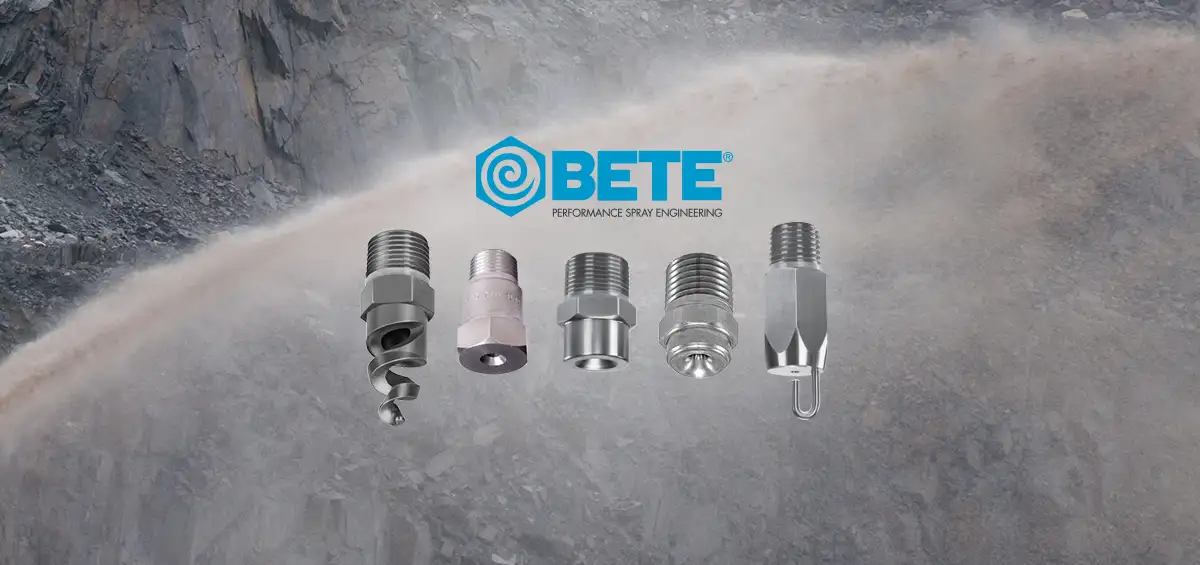The use of nozzles for dust suppression is a highly successful approach to managing airborne particulate matter in a variety of industrial and environmental environments. This approach is based on the use of specialised nozzles to disperse a fine mist of water or other liquid into the air. This aids in airborne particle absorption and settlement.

The selection of proper nozzles such as our BETE TF, MP, WL, MPL, P or PJ series, which are normally intended to create a precise and uniform spray pattern, is the first step in the procedure. Depending on the application, this may entail selecting nozzles with precise flow rates, spray angles, droplet sizes, and other factors.
Once the nozzles have been chosen, they are often installed in strategic positions around the treatment area, such as along conveyor belts, at material transfer points, or in other high-dust regions.
Fan nozzles such as BETE NF, NFD, or BJ, as well as full cone nozzles such as MP, WL, and TF, are examples of nozzles that can be used for dust suppression. The type of nozzle used will be defined largely by the application, such as a conveyor, transfer point, or pile, as well as the type of dust being suppressed, such as soils and sands, coal, iron ore, cement, quarried rock dust, building dust, and so on.
Full cone nozzles generate a circular spray pattern that is suitable for close-range dust suppression, whereas fan nozzles produce a wide-angle spray pattern that is well-suited for broad regions and open spaces. Flat fan nozzles generate a straight-line spray pattern that is ideal for applications requiring precision spray direction control.
When the nozzles are triggered, a thin mist of water or other liquid is released into the air. This mist is meticulously designed to produce excellent dust suppression, with droplets sized and spread to maximise surface area and interaction with airborne particles. The mist absorbs and weighs down dust particles when it interacts with dust-laden air, forcing them to settle out of the air and onto adjacent surfaces. This helps to lower airborne particle concentrations, enhance air quality, and lessen dust exposure dangers.
In addition to dust suppression, nozzle-based misting systems can provide a variety of other benefits, depending on the application. They can, for instance, regulate temperature and humidity, offer evaporative cooling, minimise smells and pollutants, and even restrict the growth of some bacteria and other microbes.
Overall, dust suppression using nozzles is a very efficient and adaptable technology that may improve worker safety, preserve the environment, and boost the overall efficiency and productivity of a variety of industrial operations.
If you need any assistance with your dust suppression application, let us know!


